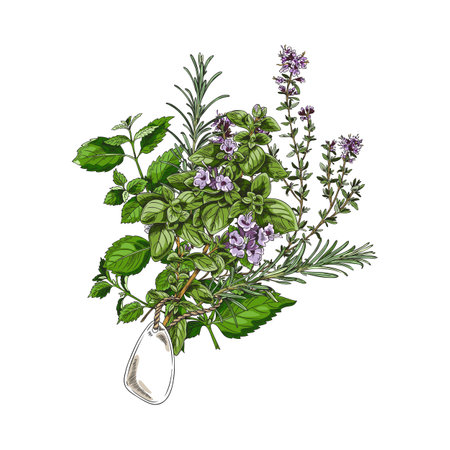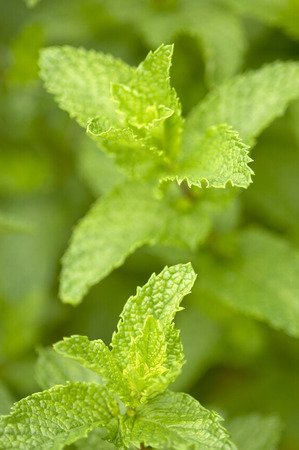Introduction to Mint in the UK
Mention mint to any Brit, and you’ll likely spark memories of fragrant gardens, refreshing teas, or the unmistakable tang of mint sauce alongside a Sunday roast. In the United Kingdom, mint is more than just another herb—it’s woven into the very fabric of British life. For centuries, mint has flourished in cottage gardens, allotments, and window boxes up and down the country. Its aromatic leaves are cherished not only for their culinary versatility but also for their longstanding role in local traditions and home remedies. From Victorian apothecaries to present-day kitchens, mint has been valued both as a soothing comfort and an invigorating flavour. The herb’s popularity endures today, reflecting a timeless appreciation for its simple pleasures and enduring benefits in daily living.
Common Mint Varieties Found Across the UK
Mint is a staple in British gardens and wild spaces, thriving in the mild and often damp climate of the UK. Several varieties are particularly popular, each bringing its own distinctive aroma, flavour, and potential for medicinal use. Below is a look at some of the most commonly grown or foraged mint cultivars found across British regions.
Spearmint (Mentha spicata)
Arguably the most recognisable mint in the UK, spearmint is cherished for its bright, sweet scent and subtle taste. It’s a favourite in traditional mint sauces served alongside roast lamb and is also a classic addition to summer drinks like Pimm’s. Spearmint leaves are easily identifiable by their pointed shape and serrated edges.
Peppermint (Mentha × piperita)
Peppermint is a hybrid between spearmint and watermint, and it packs a punch with its intense menthol flavour. Often used for soothing digestive complaints, this variety is commonly infused as tea or incorporated into remedies for headaches and congestion. Its dark green leaves have a slight purple tinge, distinguishing it from other mints.
Apple Mint (Mentha suaveolens)
This soft-leaved mint has a gentle apple-like fragrance and is often found in cottage gardens across Britain. Apple mint can be used fresh in salads, desserts, or simply brewed as a calming herbal tea. Its fuzzy, rounded leaves make it easy to spot among other garden herbs.
Other Notable Mints
The UK is home to several other notable mint varieties such as:
- Corn Mint (Mentha arvensis): Wild-growing and robust, frequently spotted along hedgerows.
- Water Mint (Mentha aquatica): Found near rivers and streams, this native species thrives in damp environments.
Summary Table: Common UK Mint Varieties
| Mint Variety | Main Features | Typical Uses |
|---|---|---|
| Spearmint | Serrated leaves, sweet aroma | Sauces, drinks, teas |
| Peppermint | Menthyl-rich, purple-tinged leaves | Teas, medicinal remedies |
| Apple Mint | Fuzzy leaves, mild apple scent | Desserts, salads, infusions |
| Corn Mint | Robust growth, wild habitat | Infusions, traditional medicine |
| Water Mint | Loves damp areas, strong flavour | Aromatherapy, teas |
This rich variety of mints not only adds vibrancy to British gardens but also forms an integral part of local culinary traditions and natural wellness practices.

3. Traditional Medicinal Uses of Mint in British Culture
Throughout the centuries, mint has been a staple in British folk medicine and home apothecaries. Its vibrant aroma and cooling qualities have made it a trusted remedy for a variety of everyday ailments. In rural villages and bustling towns alike, generations have turned to locally grown mint—such as spearmint and peppermint—for their reputed healing powers.
Mint in Folk Remedies
Historically, British families would often reach for a handful of fresh mint leaves to soothe digestive troubles after hearty meals. The custom of sipping mint tea is deeply rooted in tradition, believed to calm an upset stomach and aid with indigestion. Village healers and wise women recommended infusions or tinctures of mint for everything from easing headaches to soothing coughs and colds.
Home Apothecaries and Daily Use
Mint was an essential ingredient in the household apothecary. Mothers might steep mint in boiling water to create a steam inhalation for stuffy noses, or crush the leaves into balms for minor skin irritations. Dried mint was kept in jars alongside chamomile and elderflower, ready to be brewed into restorative herbal teas or added to compresses.
Classic British Herbal Practices
The influence of classic British herbalists—like Nicholas Culpeper—helped cement mint’s reputation as a versatile medicinal herb. Early texts praised its ability to “comfort the brain,” freshen the breath, and promote relaxation. Even today, traditional remedies endure: from peppermint oil gently rubbed on the temples for tension relief, to spearmint-infused syrups for soothing sore throats. Across Britain, these time-honoured uses reflect a culture that values balance and well-being through nature’s bounty.
4. Modern Medicinal Perspectives and Scientific Findings
In recent years, scientific research has shed new light on the medicinal potential of various mint varieties commonly found across the UK. The National Health Service (NHS) recognises mint as a safe and gentle remedy for a range of mild health concerns, particularly related to digestion and respiratory wellbeing. Current studies conducted by UK universities and health organisations have delved deeper into the specific compounds present in different mints, such as menthol in peppermint and carvone in spearmint, highlighting their individual therapeutic properties.
NHS Guidance on Mint Use
The NHS advises that herbal teas containing mint, particularly peppermint and spearmint, may help relieve symptoms of indigestion, irritable bowel syndrome (IBS), and mild headaches. While not a replacement for conventional medicine, these natural remedies are seen as complementary therapies for supporting everyday wellbeing. Peppermint oil capsules, for example, are often recommended to alleviate bloating and abdominal discomfort associated with IBS.
Scientific Research on Mint Varieties
Contemporary research focuses on both traditional uses and novel applications of British mint species. Studies highlight antimicrobial, anti-inflammatory, and antioxidant activities attributed to various mint varieties. The table below summarises some current findings relevant to UK-grown mints:
| Mint Variety | Main Active Compounds | Health Benefits | Common NHS Applications |
|---|---|---|---|
| Peppermint (Mentha x piperita) | Menthol, menthone | Aids digestion, relieves headaches, soothes muscle pain | IBS relief, indigestion support |
| Spearmint (Mentha spicata) | Carvone, limonene | Mild digestive aid, supports cognitive function | Herbal teas for digestion |
| Apple Mint (Mentha suaveolens) | Pulegone, menthone | Sedative effects, respiratory support | Cough remedies (traditional use) |
| Water Mint (Mentha aquatica) | Menthofuran, isomenthone | Antimicrobial action, supports oral health | Mouth rinses (traditional use) |
Cautions and Considerations
The NHS recommends consulting with a healthcare provider before using concentrated mint preparations, especially for those who are pregnant or have pre-existing medical conditions. While culinary use is generally considered safe for most people, stronger extracts and oils should be used mindfully to avoid potential side effects such as heartburn or allergic reactions.
5. Incorporating Mint Into Everyday British Life
Mints are more than just a garden staple in the UK—they’re woven into daily routines and wellbeing practices. Whether you have a flourishing mint patch or a few pots on your windowsill, there are countless ways to make the most of these aromatic herbs at home. Here are some practical tips for using mint varieties to enhance your everyday life and health.
Brewing Herbal Teas
One of the simplest and most cherished uses of mint in Britain is as a calming herbal tea. Peppermint and spearmint leaves can be steeped in hot water for a refreshing cuppa that soothes digestion and uplifts your mood. Try blending different mint types for unique flavours or add a slice of lemon for a citrusy twist. This ritual not only supports digestive health but also offers a mindful moment in your day.
Homemade Remedies
Mints have long been valued for their medicinal qualities. For instance, rubbing fresh peppermint leaves between your fingers and inhaling the aroma can help relieve tension headaches. Mint-infused oil, made by steeping leaves in carrier oil, can be used for gentle massages or as a chest rub during colds to ease breathing. If you’re feeling under the weather, adding crushed mint to honey creates a natural soothing syrup for sore throats.
Culinary Boosts
Fresh mint is an easy way to brighten up classic British dishes. Chop spearmint over new potatoes, mix into peas, or sprinkle atop fruit salads for added zest. A sprig of apple mint makes a delightful garnish for summer drinks like Pimm’s or homemade lemonade. These small touches not only elevate flavour but also sneak extra nutrients into your meals.
Supporting Wellbeing at Home
The invigorating scent of mint can transform your living space into a calming retreat. Place bunches of dried mint in linen drawers or wardrobes to keep clothes fresh and ward off moths—a traditional tip passed down through generations. Alternatively, simmer mint leaves on the hob with citrus peels to naturally freshen indoor air and lift spirits during grey British days.
Daily Health Routines
Integrating mint into your morning or evening routine can support holistic wellbeing. Add chopped peppermint to your breakfast smoothie, infuse bathwater with wild mint for relaxation, or simply enjoy a cup of mint tea before bed to aid restful sleep. These habits connect us with nature’s rhythms and offer gentle support for mind and body alike.
Embracing Mint’s Versatility
From the kitchen to self-care rituals, British-grown mints offer practical benefits that fit seamlessly into modern lifestyles. By embracing this humble herb, you invite both tradition and wellbeing into your home—one fragrant leaf at a time.
6. Precautions and Considerations
While the UK’s diverse mint varieties offer a wealth of medicinal benefits, it’s important to approach their use with care and mindfulness. Mint is generally considered safe for most people when consumed in moderate amounts, whether as an infusion, culinary ingredient, or topical preparation. However, certain individuals may experience adverse reactions or interactions with other medications.
Advice on Safe Use: Always start with small amounts when introducing a new variety of mint into your routine, especially if using it medicinally. Peppermint and spearmint can sometimes cause mild digestive discomfort in sensitive individuals. For children, pregnant or breastfeeding women, and those with chronic health conditions, it is particularly wise to consult with a healthcare professional before regular use.
Potential Interactions: Mint, especially peppermint oil, may interact with some prescription medicines such as antacids, blood pressure tablets, and drugs metabolised by the liver. If you are taking medication for gastrointestinal issues or have a history of gallstones, seek professional advice before using concentrated mint products.
When to Seek Professional Medical Support: If you notice allergic reactions such as skin irritation, breathing difficulties, or swelling after using mint products, stop immediately and consult your GP or pharmacist. Persistent symptoms like abdominal pain or severe heartburn after consuming mint should also prompt medical attention. Remember that while mint can support wellbeing as part of a balanced lifestyle, it should not replace prescribed treatments for serious health conditions.
In summary, enjoy exploring the refreshing world of British mints—whether making a soothing cup of garden mint tea or blending peppermint into balms—while respecting their potent nature and seeking guidance where needed to maintain your peace of mind and overall wellbeing.


